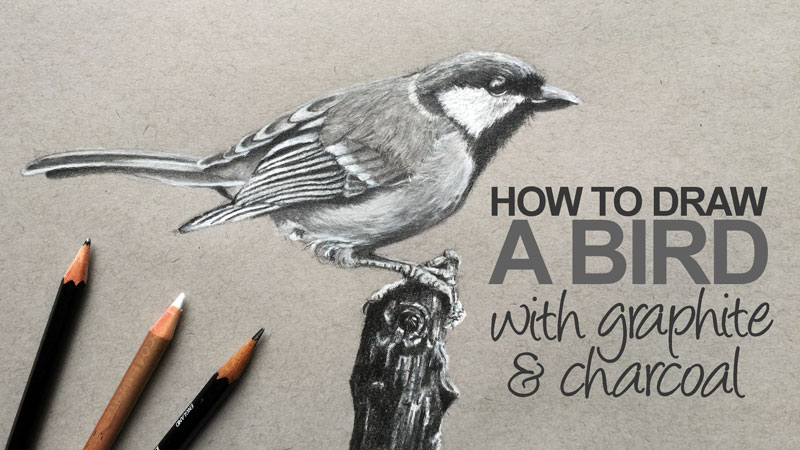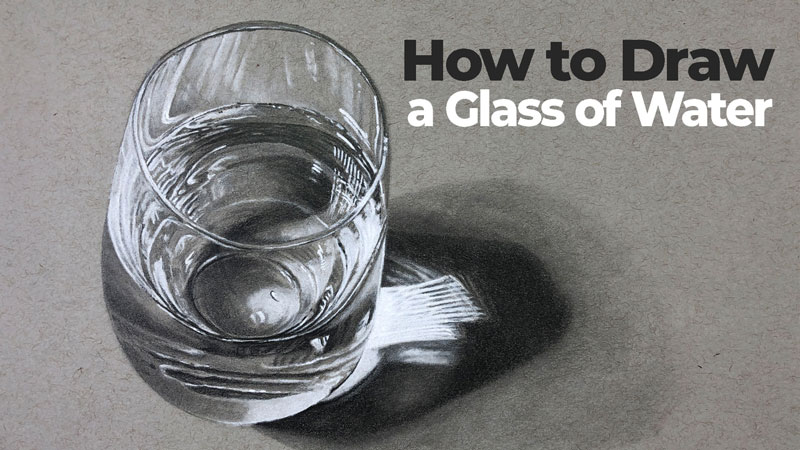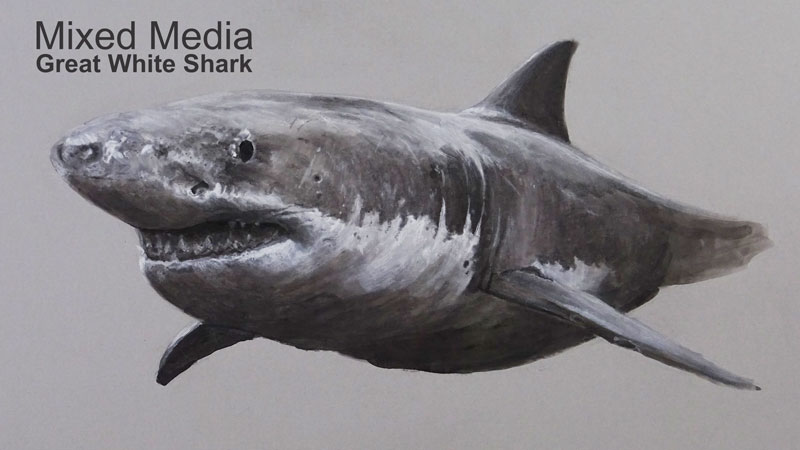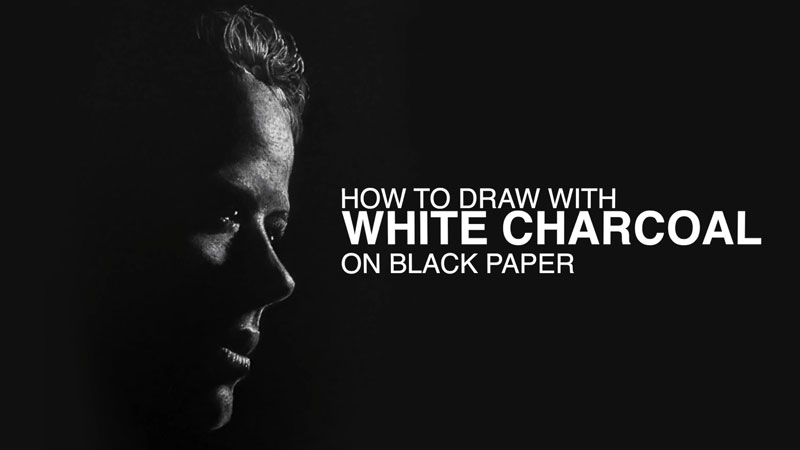Gettin Sketchy – Charcoal Drawing of a Skull on Toned Paper – Season 3 Episode 1
This episode aired live on YouTube on January 20, 2021.
In this timed drawing exercise, we take a look at drawing a skull with charcoal and white charcoal on toned gray charcoal paper. We’ll use several different forms of charcoal including vine, charcoal pencils (compressed charcoal), and “white” charcoal to complete the image.
Here’s a look at the completed image…
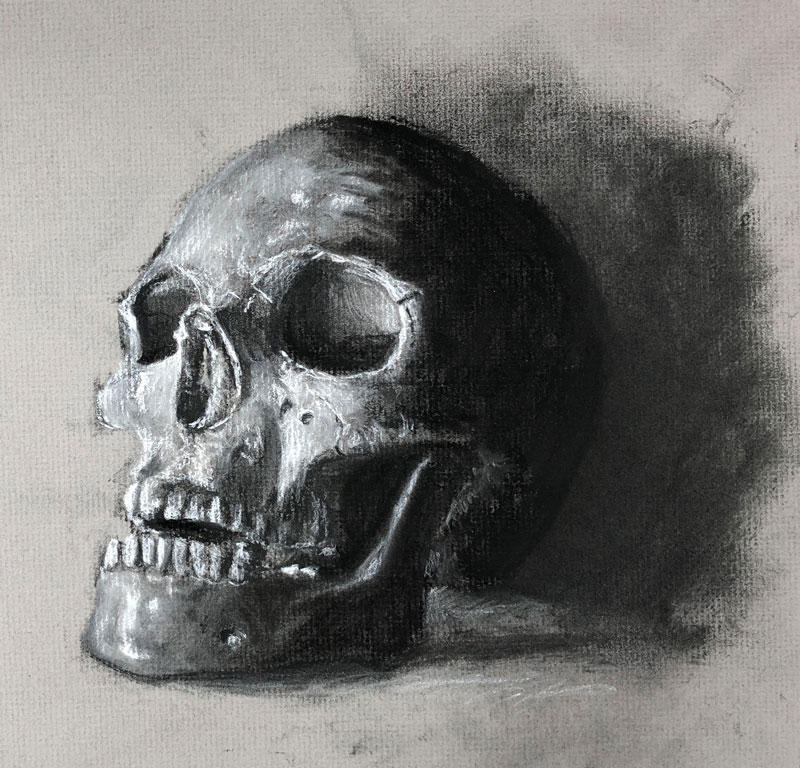
Drawing on Toned Paper
When most of us think of the process of drawing, we envision making dark marks on a white surface. Most of us learn to draw in this manner and it sticks with us. When we draw on white paper with a dark medium, we’re adding darker values and using the white of the paper to influence our light values and highlights.
This means that in order to create a full range of value in a drawing, we must work a little harder. With a white sheet of paper, we are essentially starting at one extreme of the value scale with pure white. As we add dark values, we gradually begin to broaden the range of value. But, we have to work a little harder to get a full range since we have to push the values to the darker side.
When we start with a gray surface (or any toned surface other than black or white), we begin somewhere in the middle of the value scale. This means that we can add both lights and darks to push the range of value. As a result, it’s easier to create a full range of tone since we’re not starting at one extreme end of the value scale.
See also: 6 Reasons to Draw on Toned Paper
Another benefit is that we are able to add the lighter values with a medium instead of relying on the white of the paper. This gives us more control over the lighter tones.
Obviously, when we work on a toned surface, we need to do so with a medium that allows us to add light tones. This means we need to work with a medium that has a “white” or at the very least – very light tones.
This is where white charcoal comes into play with our image of the skull. We can add the lighter values by applying white charcoal. We can control how much of the white charcoal blends and mixes with the black charcoal to control the value. The pressure that we place on the medium also influences the intensity of the application which also affects the value.
Using Charcoal Like a Painting Medium
While charcoal is clearly a drawing medium (since it is applied dry), the approach taken by the artist can be similar to that as a painter. Charcoal, like oil paints, is quite forgiving.
Vine charcoal, the softest form of the medium, is effortlessly manipulated on the surface and erases easily. This means that you can be very loose with your initial marks. Smear and smudge as much as you wish. Any stray marks are easily lifted away with a kneaded eraser. This attribute makes charcoal similar to oils and acrylics where initial marks may be loose but are eventually hidden.
As the drawing progresses and you become more confident with the information you have the surface, you can switch over to compressed charcoal or a charcoal pencil for more precision. Compressed charcoal is a darker and less dusty form of charcoal. Marks are more precise, but harder to erase.
See also: Charcoal Drawing Techniques
When working on a gray drawing surface, you can gradually increase the contrast as you progress from the softer vine charcoal to the harder, compressed form.
Photo Reference
A photo reference was used for this timed drawing exercise. This photo, originally from Pixabay.com, was edited to make it better suited for drawing with charcoal. The image was flipped horizontally so that the light source originates from the left. The contrast was enhanced and the composition was cropped.
Here’s a look at the photo reference…
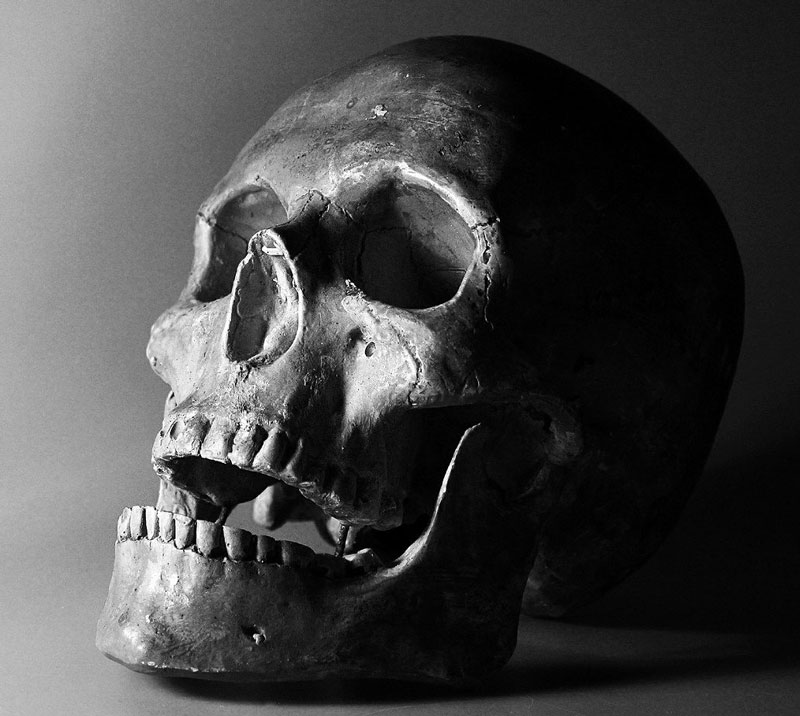
Recommended Supplies for Drawing a Skull with Charcoal
As we discussed above, charcoal in various forms was used to complete the drawing. Vine, compressed charcoal (encased in a pencil), and white charcoal were all used.
The drawing surface is always important, which is often overlooked by beginners. The surface for this drawing was no exception. Aside from the tone of the paper, the texture also plays a role. The paper used for this drawing is charcoal paper, which features a laid patterned texture. This texture helps to grip the charcoal and hold it in place. This reduces the dust from the charcoal material while giving the artist a bit more control.
See also: All About Drawing Papers
Here are a few links to purchase charcoal and gray toned charcoal paper …(The following links are affiliate links which means we make a small commission if you purchase at no additional cost to you.)
Timed Drawing of a Skull – Conclusion
A skull is a wonderful subject for practicing drawing. There are so many different textures and light always creates interesting shadows and highlights. Like people, every skull is different and there’s always something new to discover. And when we bring in a bit of charcoal, we’re right back in art school again.
If so, join over 36,000 others that receive our newsletter with new drawing and painting lessons. Plus, check out three of our course videos and ebooks for free.


